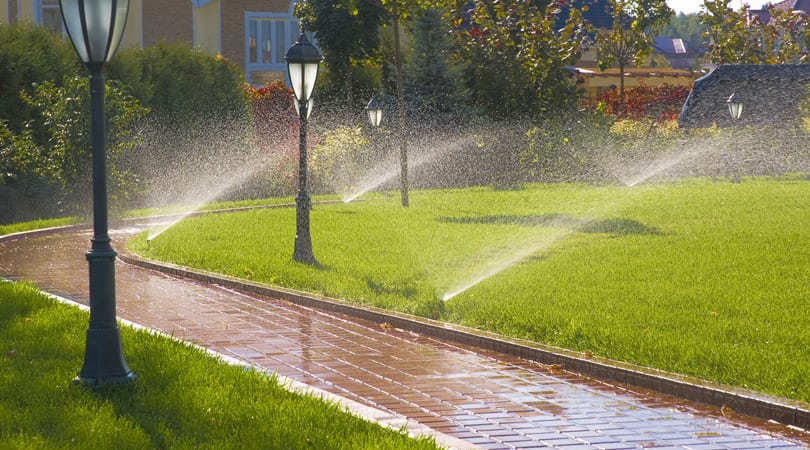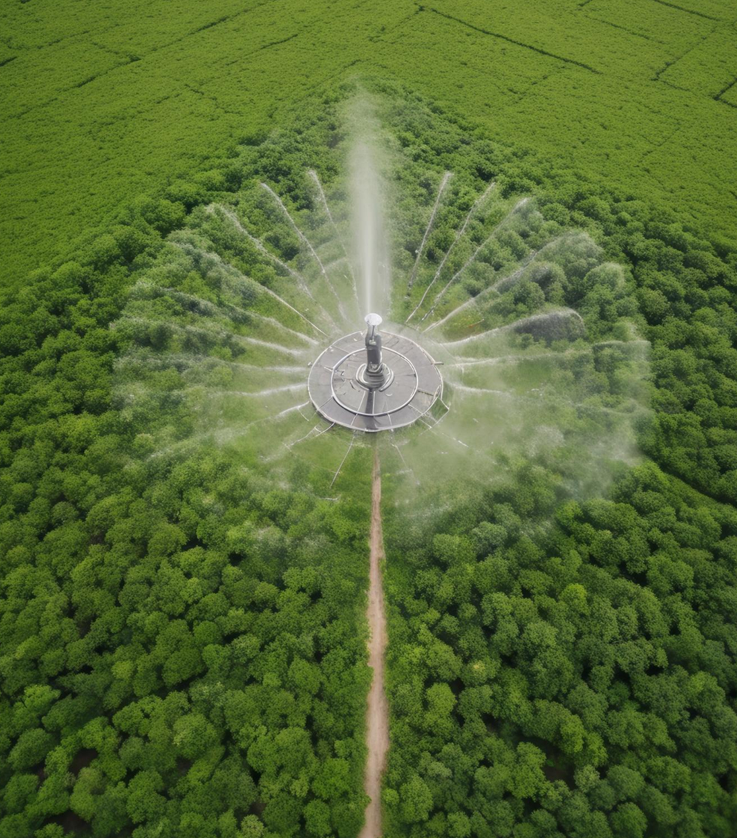Residential irrigation refers to the systematic watering of lawns, gardens, and other landscaped areas around a home to ensure that plants receive adequate moisture for healthy growth

It involves the use of various methods and technologies to efficiently distribute water across different parts of a residential property.
Proper irrigation is crucial in maintaining the beauty and health of the landscape, particularly in areas where natural rainfall is insufficient or inconsistent.
Key Components of Residential Irrigation Systems
Water Source
Municipal Water Supply: The most common source, connected directly to the home’s water system.
Wells: Private wells are another common source, especially in rural areas.
Rainwater Harvesting: Collecting and storing rainwater for irrigation.
Surface Water: In some cases, ponds or streams can be used as water sources.

Irrigation Controllers
Manual Controllers: Require homeowners to manually turn the system on and off.
Automatic Controllers: These can be programmed to water at specific times and days, offering convenience and consistency.
Smart Controllers: Advanced controllers that adjust watering schedules based on weather conditions, soil moisture, and plant needs, helping to conserve water and optimize irrigation.
Valves
Zone Valves: Control water flow to specific areas or zones of the landscape. Each zone is typically designed to have similar water requirements.
Master Valve: A primary valve that controls the overall flow of water to the entire system, providing an additional layer of protection against leaks.
Pipes and Tubing
Main Lines: Larger pipes that carry water from the source to the valves.
Lateral Lines: Smaller pipes that distribute water from the valves to the irrigation heads and other system components.
Drip Tubing: Used in drip irrigation systems to deliver water slowly and directly to the root zones of trees and plants

Irrigation Heads
Sprinkler Heads: Commonly used for lawns, these heads spray water over a wide area.
Rotor Heads: These heads rotate to cover a more extensive range than standard sprinklers.
Drip Emitters/Bubblers: Deliver water slowly and directly to the roots of plants, making them ideal for garden beds, shrubs, and trees.
Benefits of Irrigation Systems
Consistent Watering: Automated irrigation systems provide consistent watering, ensuring that plants receive the right amount of water at the right times.
Water Conservation: Modern irrigation systems, especially those with smart controllers and drip irrigation, are designed to minimize water waste by adjusting to weather conditions and watering only when necessary.
Time-Saving: Automated systems reduce the need for manual watering, freeing up time for homeowners.
Healthy Landscapes: Proper irrigation promotes healthy plant growth, which enhances the beauty and value of the property.
Erosion Control: Controlled watering helps prevent soil erosion by applying water slowly and evenly.

Types of Residential Irrigation Systems

Sprinkler Systems
The most common type, using sprinkler heads that spray water over the landscape. These systems are effective for watering large areas like lawns.
Drip Irrigation Systems
Delivers water directly to the base of plants through a network of tubing and emitters. This method is highly efficient, reducing water waste and minimizing evaporation.
Soaker Hoses
Porous hoses that release water slowly along their length, ideal for garden beds and areas with densely planted vegetation.
Surface Irrigation
Water is distributed over the soil surface by gravity, typically in furrows or basins. This method is more common in larger garden areas.

Subsurface Irrigation
Water is delivered below the soil surface, directly to the root zone. This system minimizes evaporation and runoff, making it very efficient.
Design Considerations for Residential Irrigation Systems
Landscape Layout: The system should be designed to accommodate the specific layout of the property, including slopes, plant types, and areas of sun and shade.
Water Requirements: Different plants have varying water needs. Zones should be established to group plants with similar requirements together.
Soil Type: Soil characteristics, such as texture and drainage, affect how water is absorbed and retained. The system should be adjusted accordingly.
Climate: The local climate will influence the frequency and duration of watering. In dry or hot climates, more frequent watering may be necessary, whereas in cooler or wetter climates, less frequent watering is needed.
Budget: The complexity of the system should align with the homeowner’s budget, balancing upfront costs with long-term savings on water and maintenance.


Maintenance of Residential Irrigation Systems
Regular Inspections: Periodically check the system for leaks, clogged heads, and other issues that could reduce efficiency.
Seasonal Adjustments: Adjust watering schedules seasonally, or as needed, based on changing weather conditions.
Winterization: In colder climates, systems should be winterized to prevent damage from freezing temperatures. This typically involves draining the system and blowing out the lines with compressed air.
Repairs: Promptly address any damage or malfunctioning components to ensure the system operates efficiently.
Controller Updates: Ensure that the irrigation controller is properly programmed and updated to match current weather patterns and plant needs.
Residential irrigation is a crucial aspect of maintaining a healthy and aesthetically pleasing landscape. By choosing the right system and managing it effectively, homeowners can enjoy lush, vibrant outdoor spaces while conserving water and reducing the time and effort required for manual watering.
Advances in irrigation technology, particularly smart controllers and drip systems, have made it easier than ever to achieve a beautiful, water-efficient landscape.
